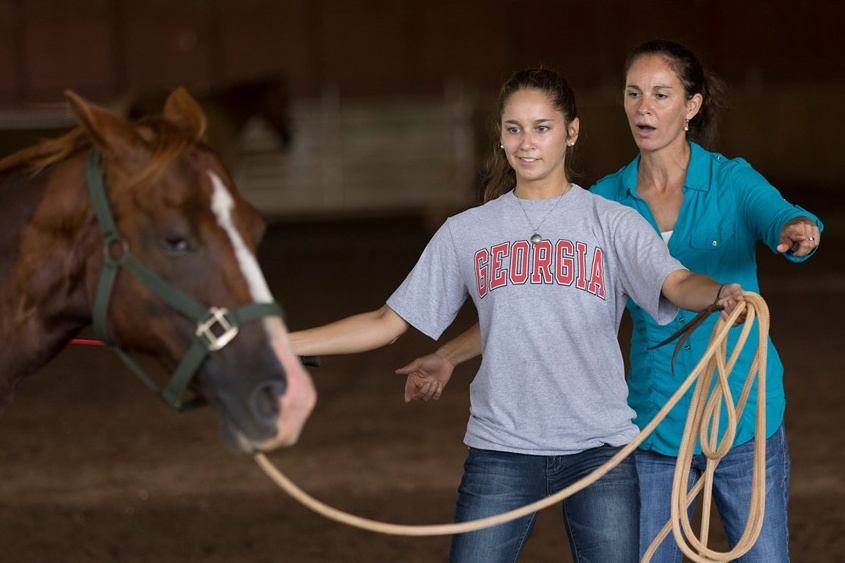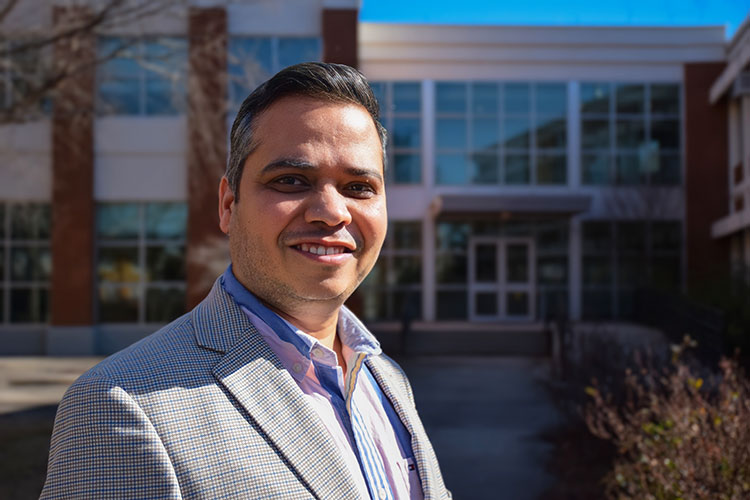
Three University of Georgia professors from the College of Agricultural and Environmental Sciences have been appointed to serve on Joint FAO/WHO Expert Meetings on Microbiological Risk Assessment (JEMRA) from 2023-27.
JEMRA aims to develop and optimize microbiological risk assessment to improve decisions related to food safety in both developing and developed countries.
Chosen by the Food and Agriculture Organization of the United Nations (FAO) and World Health Organization (WHO) secretariats and external referees, Faith Critzer, Abhinav Mishra and Todd Callaway received their appointments in late January and will serve among a roster of experts from 33 countries across the globe.
In a recent interview, the faculty shared about their appointments to JEMRA.
What does it mean to be appointed to JEMRA?
Critzer: “I see it as being able to contribute to global food safety and helping put the best science-based information out there for all countries to consider. It’s also a really good mechanism for collaborating with people around the globe because you have representatives from all over the world who are experts on the topics that we're going to be addressing. It’s really just trying to help impact food safety beyond Georgia and the United States.”
Mishra: “This panel has fewer than 100 experts from all countries, and it is an honor to represent the University of Georgia in this way.”
Callaway: “We have been gifted the opportunity to make a difference in terms of what scientific knowledge gets disseminated to the rest of the world and how our research is translated into practical guidelines for underdeveloped areas of the world. It allows us to take things that our academic grandparents and parents have done and distill that all down into something that makes a real difference in people's lives around the world.”
Why is this committee important?
Critzer: “JEMRA’s overall mission is focused on setting the best approaches for managing food safety and risks across multiple socioeconomic categories and trying to arrive at the best approach. Hopefully, what gets adopted is the best policy for underdeveloped countries to manage risk so that fewer people die of foodborne illness or have long-standing diseases caused by foodborne illness.”
Mishra: “JEMRA is tasked with assessing various aspects of microbiological hazards in the food supply. I want to use this opportunity to serve on various subcommittees and other JEMRA activities, wherever my expertise might fit.”
Callaway: “The World Health Organization includes the people that beat smallpox; they have defeated a lot of viruses and diseases that have affected human civilization from the very beginning. It's an organization that is put together with high-minded ideals of making the world a better place and a safer place for humans to live.”
What do you bring to the table of this roster of experts?
Critzer: “My focus is on produce safety, and that is something that's important for everyone because fruits and vegetables are such a big part of a healthy diet. We don't cook a lot of the fresh fruits and vegetables that we consume and, if they are contaminated, then they can definitely be a source of illness. I also do a lot of research identifying and managing risk associated with Listeria monocytogenes, Salmonella, and Shiga-toxigenic E. coli.”
Mishra: “My expertise is in quantitative risk assessments. Whenever there is a need to develop these assessments for any particular hazards or any foods, I would be happy to serve on the subcommittees that are researching them.”
Callaway: “I bring a lot of knowledge on E. coli, other enterohemorrhagic E. coli and salmonella behaviors. I am very knowledgeable in the ways that beef, dairy, pork and, to a lesser degree, poultry is produced in the United States and throughout North America. I work in a group that looks at the interface of leafy green vegetables with animals, especially in California. It allows us to look at different transmission rates of pathogens between animals and plants and vice versa.”
If there was one issue that you would like to cover during your appointment, what would it be?
Critzer: “I would like to continue to work in the area of the role of water in fresh produce contamination because water is so far-reaching. It's more than just what we use for growing crops. It's also the water that is being used for hydration for people. When it comes to improving water quality and easy-to-use treatments that can be deployed at a very small level, then you are going to improve human health and well-being by a long shot.
Mishra: “My particular research is on meat and poultry, so if there is any specific need, I can speak on those. I also work with Dr. Critzer on fresh produce and water treatment.”
Callaway: “I want to understand how antimicrobials work to improve the efficiency of animals. If we feed tetracycline to pigs or chickens, they grow more efficiently. If we feed them in a very low dose and they also grow more efficiently, we still don't know why that happens. If we can understand why and how that happens, then we can develop other approaches to replace that benefit that are not antimicrobial.”
View the committee's mission and a complete list of experts on the JEMRA website.






